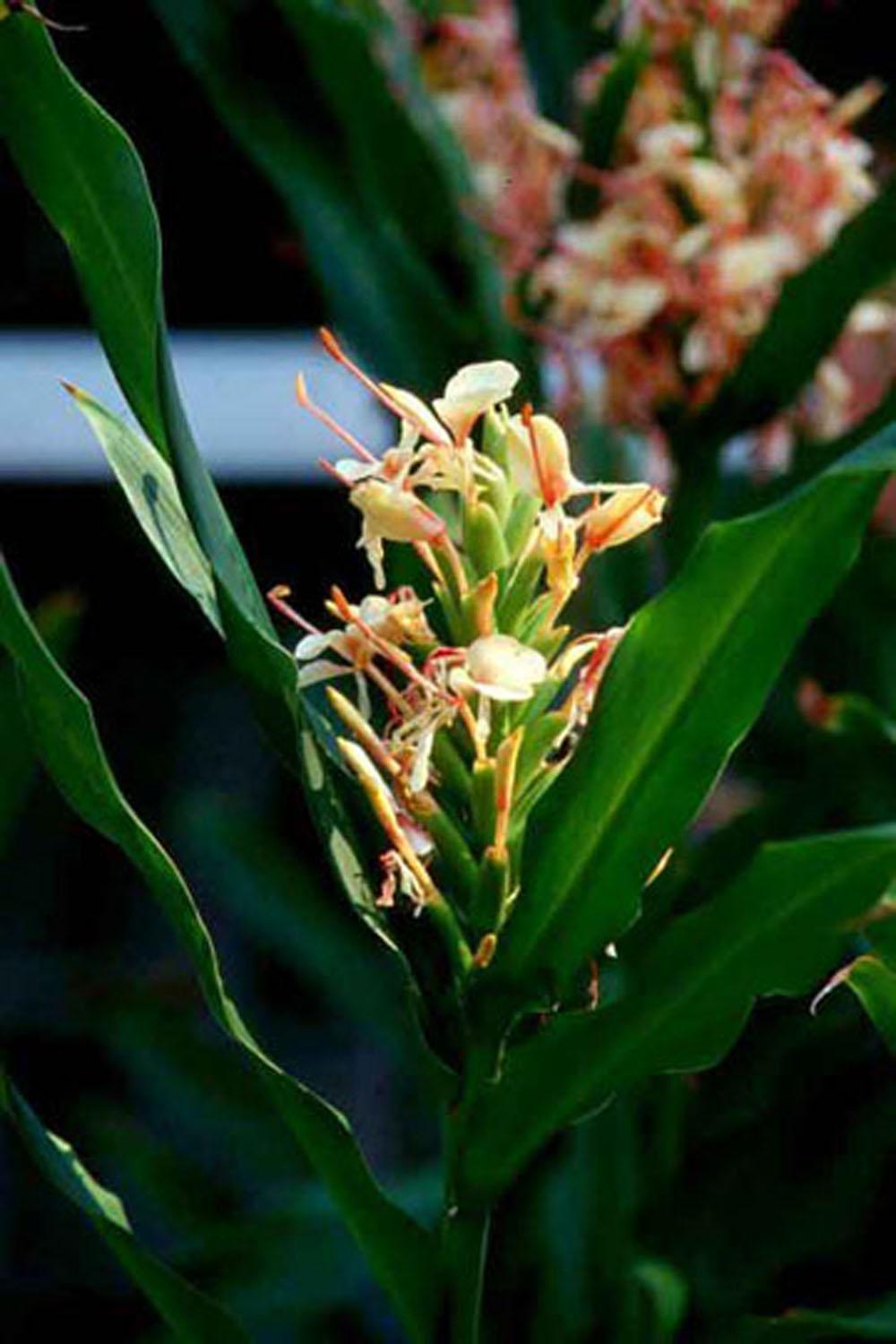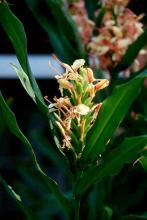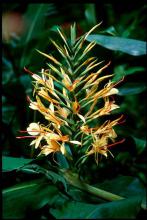Information Possibly Outdated
The information presented on this page was originally released on July 29, 2004. It may not be outdated, but please search our site for more current information. If you plan to quote or reference this information in a publication, please check with the Extension specialist or author before proceeding.
Spice up landscape with showy gingers
By Norman Winter
MSU Horticulturist
Central Mississippi Research & Extension Center
One of the lyrics in a Jimmy Buffett song says, "I have a Caribbean soul I can barely control," and I must admit to the affliction, too!
Sure, the water and the laid-back atmosphere are great, but the plant life is what I love. It was in the Caribbean that I first discovered a passion for gingers, especially hedychiums.
They are all over the islands and appear to be native, but actually they were brought in hundreds of years ago and have now made themselves at home. Luckily, many of these gingers will do the same in your garden.
If you thought ginger was an herb or spice, you are right: it is both. The edible ginger you buy at the store and grate for those zesty chicken dishes is Zingiber officinale. The spice Tumeric comes from the ginger known as Curcuma longa.
Believe it or not, all gingers are edible according to Madelyn Hill and Gwen Barclay, authors of "Southern Herb Growing." They do warn, however, to go lightly at first to see if you like the particular flavor of the ginger you are using.
Most ginger-growers have no intention of eating the roots or rhizomes. We want the lush, tropical-looking foliage and spectacular blooms of hedychium gingers. This genus also is noted for cold-hardiness and has some of the most fragrant flowers available for the garden.
The most common in the South is the butterfly ginger, Hedychium coronarium. White, butterfly-shaped flowers top the tall, dark green-leafed canes with a fragrance as enticing as a gardenia.
The scarlet ginger, Hedychium coccineum, is showier. This exotic-looking ginger features 10-inch-long, orange to red floral spikes produced on 6- to 7-foot canes. Tara is the leading variety of the scarlet ginger, but I am partial to one called Peach. Featuring larger flowers and a sweet aroma, it is known usually as Hedychium angustifolium but has been reclassified as H. coccineum.
The choice selection may be the Kahili ginger, Hedychium gardnerianum. This ginger produces enormous canes topped by clusters of large, yellow flowers with red stamens. It also is a perfumed delight.
If you have decided to give them a try, know that gingers thrive in dappled shade or filtered light. Occasionally I see some looking good in almost full sun, but this is the exception and not the rule. They do prefer deep, well-prepared, well-drained beds rich in organic matter. Soil preparation will pay big dividends in your ginger bed.
Think about the areas around your home that are microclimates, offering a few degrees of added winter protection. Perhaps you have a protected area next to a wall on the south or east side of your home, or under large oaks.
Gingers need plenty of moisture and fertilizer to keep them growing vigorously. Feed in early spring and again in mid-summer with a slow-release 2-1-2 fertilizer or 12-6-6 with minor nutrients. Remove frost-bitten stalks in the fall, and add a protective layer of mulch.
Gingers combine wonderfully with bananas, cast iron plants, coleus, elephant ears, ferns, philodendrons, hostas, caladiums, impatiens, begonias and many more.
Why grow hedychium gingers? When the dog days of summer make many of us cast a wishful eye toward the Arctic for relief, and our gardens are looking tired, the ginger really starts to put on a show. Try some and you also may have a Caribbean soul you can barely control!




